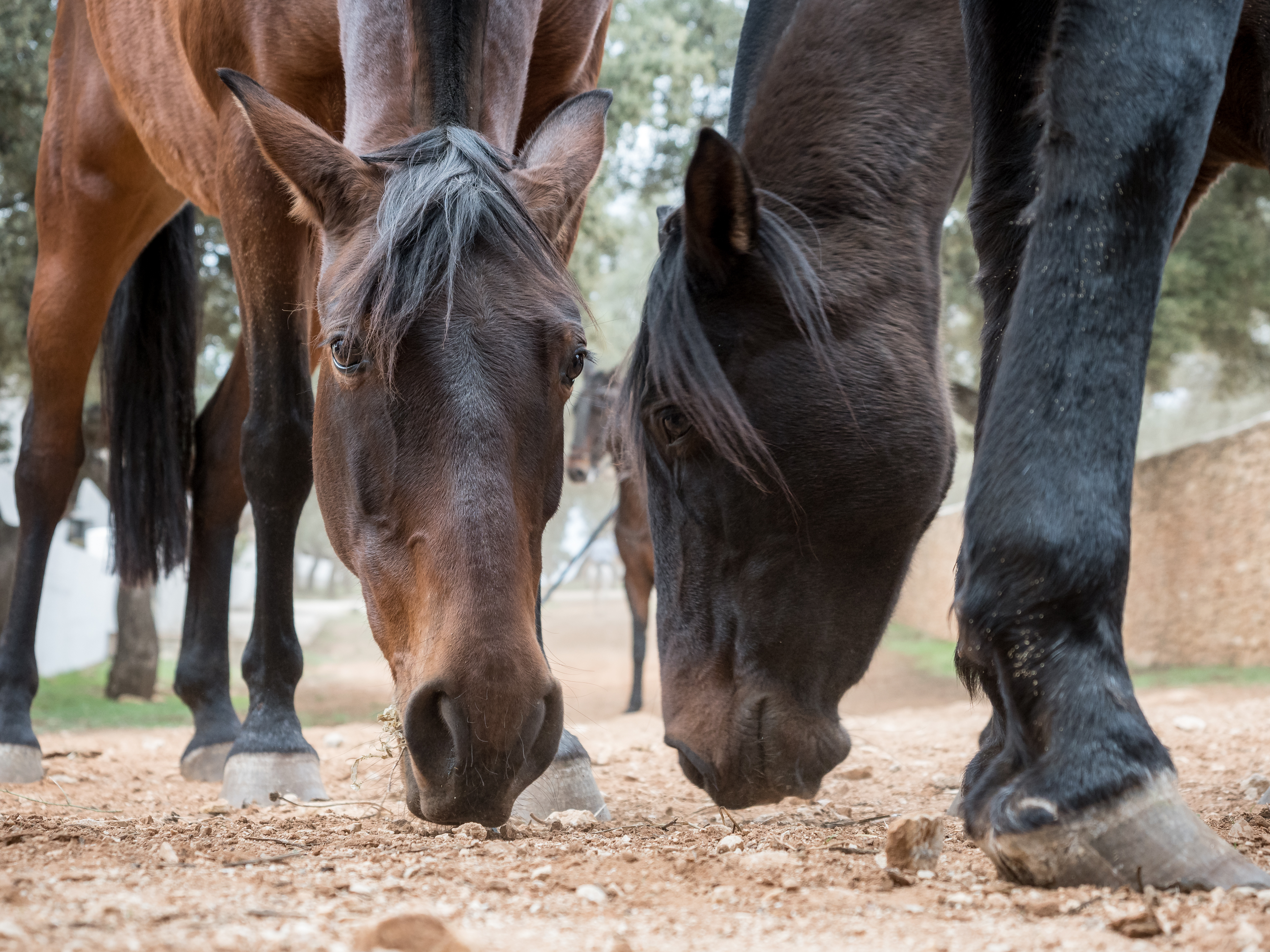Gas is important sign in sand colic cases
- October 20, 2025
- ⎯ Christine Barakat with Mick McCluskey, BVSc
Research from California has identified a sign—accumulated gas—that may be particularly useful in predicting whether a case of sand colic will require surgery.
Characterized by intermittent gut pain and diarrhea, sand colic occurs when large quantities of sand, ingested when grazing, settle in a horse’s large colon. Medical treatment includes administering fluid intravenously, along with laxatives to help move the sand through the digestive system. If those measures fail or if the pain becomes severe, surgery to manually remove the sand may be required.

To better understand the factors that influence whether a case of sand colic will be resolved with medication alone or require surgery, researchers at the University of California—Davis reviewed the records of 153 horses admitted to the clinic for suspected sand colic between 2004 and 2014. They determined the severity of sand accumulation by reviewing radiographs and calculating the square area of visible sand. They also noted whether gas accumulation was detected in the initial exam, either on radiographs or though rectal palpation.
Gas can accumulate for a variety of reasons, says Isabelle Kilcoyne, MVB, DACVS. “The gas buildup can be because the sand is causing an obstruction, thus preventing it passing through. Or sometimes the colon can become displaced and, because it is weighed down by the sand, it makes it more difficult to flip back to the right place, somewhat causing an obstruction, too.”
In their review of the records, the researchers also determined which horses ended up being sent to surgery for sand removal and which cases required only medical management to resolve. They found that horses who showed increased gas accumulation were significantly more likely to require surgery, but there was no correlation between the amount of sand and the need for surgical intervention.
Regardless of treatment, the prognosis for the horses with sand colic was very favorable, with 94.8 percent treated medically and 94.7 percent treated surgically surviving to be discharged. This, says Kilcoyne, was not unexpected: “Generally any conditions of the large colon do well, say, compared to small intestinal problems.”
Click here to read about how to prevent sand colic in horses.
Kilcoyne says that while gas accumulation can be a useful detail for a veterinarian investigating sand colic, it is only one in the larger picture. “It is a clinical sign to combine with others,” she says. “It is a parameter that may suggest to the clinician that there is possibly more going on than just a routine sand impaction, such as a displacement.”
Reference: “Clinical findings and management of 153 horses with large colon sand accumulations,” Veterinary Surgery, August 2017
This article first appeared in the October 2017 issue of EQUUS (Volume #481)
Don’t miss out! With the free weekly EQUUS newsletter, you’ll get the latest horse health information delivered right to your in basket! If you’re not already receiving the EQUUS newsletter, click here to sign up. It’s *free*!





